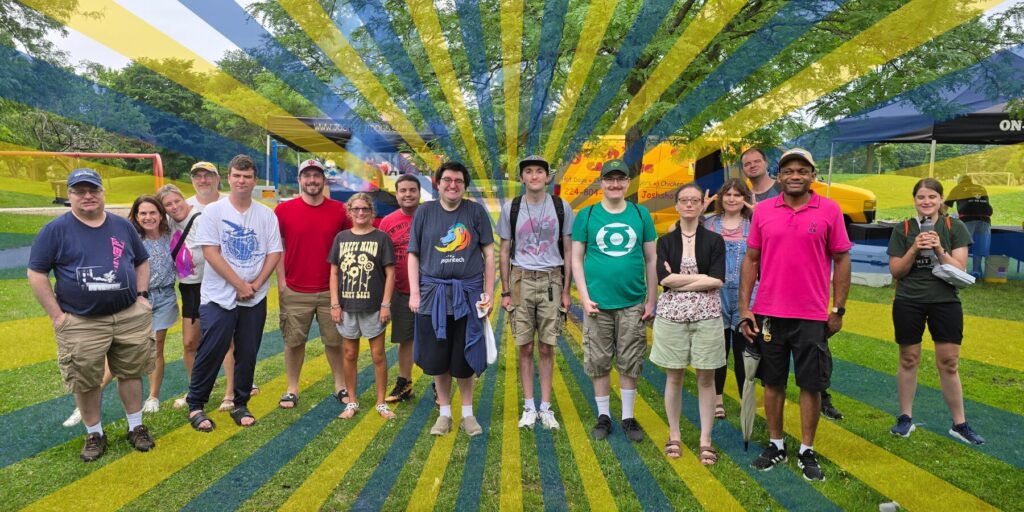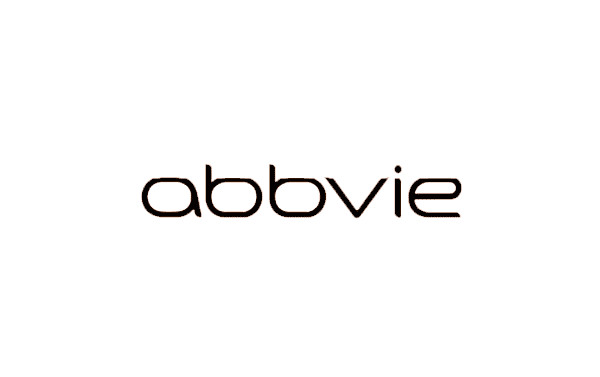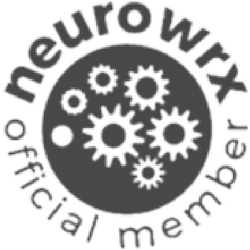Episode Transcript
Robin Kacyn Hello, and welcome to On the Verge. I am one of your hosts, Robin Kacyn. I am here with my co-host, Rachael Brusic; ah, Tara May could not join us today. And we have a delightful guest today: Amanda Hebert Hughes.
What can I say about Amanda? Amanda is an artist, a designer, an activist and advocate, a mom, and so many other things—an author! And recently, we had the distinct pleasure of working with her to redesign and completely reimagine three of our Evanston office spaces.
She’s an absolute pleasure. I’m so excited for all of you to get to know her, and I’m so excited to be speaking with you. Hello, Amanda! Welcome!
Amanda Hebert Hughes Hello, Robin and Rachel! Thank you for having me here.
Robin Kacyn It’s so, so, so good to speak with you in a capacity that’s not all about designing and moving, and where to put tables.
Amanda Hebert Hughes That’s fun, too.
Robin Kacyn That’s a lot of fun, too. I think I would love for our listeners to get sort of an idea of who you are, because you encompass so many different incredible accomplishments and ideas. So, can you just—can you just tell us a little bit about yourself?
Amanda Hebert Hughes Yeah, sure. So, I’m originally from New York. I’m an late diagnosis, openly autistic adult, and I’m living in the South right now. I live in Charlotte, North Carolina, with my family. I started painting—I’m a painter, as you said—I’m an author, I’m a designer. I post a lot of content online to just kind of share with the world what I do. And I like to share my art just to brighten people’s day and educate people about what it’s like to be neurodivergent and to let other neurodivergent people know that they’re not alone.
But I started painting basically as a career back in 2019. And that was before I was diagnosed as autistic. And … from the get-go, I’d always had art education. Public school in Saratoga Springs, where I grew up, there was a lot of emphasis and financial resources poured into the public school system for fine arts, and so I was able to take so many different kind of art disciplines: Ceramics 1 and 2—you know—studios, senior seminar art history, all that stuff. So I really had quite an impressive foundation, just even when I—by the time I graduated high school.
I always had a propensity for art. It just came naturally to me. But the catalyst in 2019 that all of a sudden unlocked something in me that I wanted to do this full-time was: I opened a container of oil paint. I’d never used oil paint before. In all the art classes I’d ever taken, they never did oil paint—super messy, expensive, hard to clean up—you name it. And the texture in the oil paint spoke to something in my sensory brain. And I said, “This is—I’m gonna do something with this.” And all of a sudden, this genre—and I didn’t even know it was a new genre—I just started to see these pictures and things I could do with this paint immediately. And I immediately started painting in this very consistent style, and have been ever since. And it was during that time, maybe about a year later, that I discovered that I was autistic. And so ever since then, I’ve been discovering why I do what I do, and able to share that with the world, as well.
Robin Kacyn So, that’s fascinating. So … oil paint as catalyst and painting, then. Did that—did that help you come to maybe a space where you wanted to be diagnosed, or where you started thinking about your own sensory needs?
Amanda Hebert Hughes It did not. And ironically, it was completely off my radar—it was not on my radar at all. At the time, we were discovering that our son was autistic, which opened the door for me to discover that I was autistic. And so, it was kind of like working our way backwards to realize why I was painting the way I was painting, because it was—it was a very specific style—and a lot of people didn’t really understand it. And I guess subconsciously, I knew I was doing something, creating an image that was calming to me, and what it ended up being was, I was producing sensory gated images. Taking all of the visual overload in the world that I see around me, turning it into something in a way I wanted to see it.
Robin Kacyn So can you talk to us more about Sensory Gated Art? Because you’ve essentially pioneered that movement and you practice that movement. And it’s it’s it makes so much sense, it’s so fascinating. Can you tell us a little bit about that? Robin Kacyn So can you then—can you talk to us more about Sensory Gated Art? – Amanda Hebert Hughes Sure, sure. – Robin Kacyn Because that’s sort of—you’ve essentially pioneered that movement and you practice that movement. And it’s, it’s—it makes so much sense, it’s so fascinating. Can you tell us a little bit about that?
Amanda Hebert Hughes Sure. So for someone who’s just learning about this for the first time, it’s a painting genre that I use. It’s really kind of like minimalism reinvented in a way to make images more neuro-friendly. What I mean by that is: every brain, whether you’re neurodivergent or neurotypical, does something called sensory gating. It’s how our brain processes the information taken in by the five senses and filters out the important information from the unimportant information. That’s a cognitive process. For most people it happens subconsciously, so it doesn’t take a lot of effort or energy, but for a lot of neurodivergent brains, that is a conscious process that takes additional energy from us. And so, you can have two different people looking at the same thing, but one person exerting more concentration to process that information. And it’s not because we lack intelligence, it’s because we don’t ignore a lot of factors automatically, as much as most people do. We’re considering all of the details; we’re seeing it as if through a microscope. That’s a lot of information that we’re processing, because we’re considering it all.
And so, Sensory Gated Art does a lot of that process for you. It gives you a sensory-gated image; it’s less visual information for the brain to sort through. It delivers what I think is important and beautiful and primary to what I’m trying to deliver.
Robin Kacyn Thank you so much for that—for that beautiful explanation. I have so many questions, but I see that Rachael also has a question. So, Rachel, please go ahead.
Rachael Brusic Yeah, I—you mentioned that it was a way for you to kind of take all the external stimuli that you see everywhere, and kind of filter it into your work, your artwork. But I just had a question out of curiosity: How did—how did your artwork change, or did it change when Covid happened, when we had that lockdown—when we didn’t have as much external stimuli, necessarily?
Amanda Hebert Hughes Mm-hmm. Really, any environment, any environment that I’m in, anything that I want to deliver is something that may be in my mind. I deliver it in a filtered image, and what I mean by that is: there’s clean lines. There isn’t blending and details for the eye to sort through. Everything is organized into its sections—clean. It’s less for the brain to process. The colors have logical relationships. That’s information that’s easier for the brain to integrate.
Robin Kacyn And so it’s almost like, it’s sort of, it sounds to me like your—because the world is not designed like that, right? The world is not designed to consider any mind other than the neurotypical mind. In a large sense, right? And so, what your art can do is at least reduce a little bit of that noise … so there’s not quite as much to take in.
Amanda Hebert Hughes Yeah, I mean, at least for the art world, as far as paintings go, I didn’t know I was doing something so unique. I was doing something for this reason, in this way. I didn’t know I was the only one doing that, because for a while I was like, “Where do I fit in the art world? How do I describe this to people?” And there was just nothing that accurately described what it was until I read Burnett Grant’s blog, “Sensory Gating.” And I learned about that cognitive process. And I realized, “That’s exactly what I’m doing with my painting. I’m adding a filter. And this filter has really unique characteristics. And that’s why it’s consistent.”
Robin Kacyn And Amanda, what’s the reception been like to your artwork? I mean, I know I want every single piece. It’s so, so soothing and beautiful.
Amanda Hebert Hughes It, you know, just like everything that’s unplanned never goes the way you can imagine, you know. When I first started out and I didn’t know it was a new genre, and I didn’t really know how to explain to people what I was doing and why I was doing it very well, because I didn’t understand that my brain was autistic. But once I learned how my autistic brain—you know, that it’s, that’s how it works—I’m able to explain it to people more. So at first, when I wasn’t able to explain it well, I think, you know, people didn’t really know how to, what to make of it. And I accepted that; I was to a point where I felt compelled to paint this way and I can’t—I’m not gonna change it for people’s validation—because that’s not the purpose. If I don’t do this, it won’t exist. And it needs to exist. This is how I’m meant to paint and express myself. So I had accepted that, you know. It may be that no one ever connects with this style. And I accept that. Van Gogh, no one connected with his work while he was living. And he’s not like he had the Internet where he could post a picture and find one person in the world who was like, “Oh, that’s great!” And just give him that validation. So I thought about him a lot, and I said, “You know what, he did what he felt compelled to do despite his challenges, despite the criticism he got.” I’m ready to do that as well.
Robin Kacyn I’m going to add all of us at Aspiritech to that list of people whose lives you’ve made better, because these spaces in Evanston are so profoundly calming, profoundly easy, and nice to be in. I do want to talk a little bit about your sensory gating—when it’s not visual art, when you’re applying it to an entire space. How’d you find your way into that? Was it a natural transition? Or, how did that go?
Amanda Hebert Hughes So, thank you for bringing that up, because that is a really cool chapter, as well; it’s one of my newest chapters. So, the principles that I have been using in Sensory Gated Art painting have so much consistency that I’ve noticed that I was applying the principles to things other than just the painting. So in the middle of this year, I had told my followers, because I’ve been following the research of Sophie Schuyler; she is a physiologist for built environments—basically a neuroscientist for “How does our environment, the spaces we’re in, the built spaces we’re in impact our brains, our behavior, our mental health, and that kind of thing?” So I’ve been following her research, and one of the things that she had emphasized was that plants are really great for fighting depression. You know, the data shows that people prefer to be in environments where there’s plants, nature, that kind of thing—and it has positive impacts on their mental health and how they feel about where they are.
And so I told my followers, “I’m going to turn plants into Sensory Gated Art because we know that Sensory Gated Art is calming for the brain because it does the sensory gating process for the brain with the power of nature and plants. Let’s see how this goes.”
And I decided to do a Sensory Gated Art painting of plants for my living room. And so, I had planned the piece, and then I couldn’t help but think about “How’s this piece going to be cohesive with the rest of this room?” Because if the colors aren’t related, that’s more laborsome for our brains to integrate that information because it’s not logical; there’s not a logical relationship, it’s not sensory gated.
So I turned the whole living room into a Sensory Gated Art living room. The backstory to that, on how I knew how to do that, was that there were a lot of things that came to me as obvious, like things that were logical that occurred to me as a result of all the people I had been listening to and observing, and all the different brain types that I hear about. I read blogs. I follow people online. I just listen, listen, listen, listen. And, you know, what I saw emerging was it seems like when it comes to environments, environments impact our mental health, and there tends to be two different types of brains: brains that are prone to anxiety, and brains that are prone to depression.
And so I thought to myself, “Okay. It tends to be that the brains that are more prone for depression have a natural nature of being pretty calm and understimulation stresses them out. Then you have the opposite. You’ve got anxious brains which tend to be high-energy brains and they want things that are sensory gated. They want things that are toned down and mellow because busy and energetic things stress them out.” So I’m thinking, “Okay, we need factors in the room that bring up the energy level for people with calm brains. We need factors in the room that bring the energy level down for brains that are high-energy. How are we going to do that? Well, we’re going to find balance.” And so I did a blog. I observed all the things that tend to have properties of being energizing and calming. How to make sure you have an equal balance of both in a space so that you’re not being overstimulated or understimulated as a whole, and then making sure that they’re cohesive at the same time, which is Sensory Gated Art. Everything has a logical relationship. So to me, it all kind of came together very in an obvious kind of way, and I was able to kind of create this recipe like, this is my philosophy on how we can create environments that are good for both brains. Because if you think about it, doctors are treating right now, anxiety or depression in people. They’re either going to give them an upper, a drug for people who are depressed, or a downer for people who have high-energy brains and deal with anxiety. So to me, that shows two different brain types as well. So it was just kind of like this pattern I kept seeing. And so I said, “Let’s just do a balance.” Because I’m a high-energy brain. I’m prone to anxiety. I can be in a room that has some energizing factors as long as I have my calming factors. So Sensory Gated Art Design was born.
Robin Kacyn Amanda, that sounds—that feels—so incredibly innovative and also so simple, like such an obvious … such an obvious parallel to draw. I, I, I, I love it, and that’s exactly how I feel when I’m in those rooms, as someone with a more anxious brain myself; um, stimulated and calmed and taken care of. It’s—oh, gosh, that’s so—thank you so much for giving us your philosophy.
Amanda Hebert Hughes Oh, I’m so glad that you all are enjoying it.
Robin Kacyn Very, very much. Um, uh, Rachael, I know that you’ve had your hand up, so please go ahead.
Rachael Brusic Uh, yeah. Your story is so inspiring to me especially, and the, the visuals that you create for entire rooms—especially in our Evanston office, have really kind of taken that, that stress of “go go, go, go all day,” and kind of given us that escape to kind of de-stress and kind of have almost an oasis to get away from it all. And first—I—from all of us, I want to thank you so much for that—ah, for everything you’ve worked on for us. But also—I, I’m so curious because you’ve mentioned how it’s been such a great way for you to kind of express everything that you see into your artwork. But, as you’ve kind of been in the art field, have you experienced any difficulties as an autistic person—um, kind of interacting with the art community or trying to, ah, have yourself as an autistic person be expressed in the community?
Amanda Hebert Hughes That’s a very good question … I … am a strong believer in the power of accommodations. And … as you all know well at this, at Aspiritech very well, and are really leading the way in so many aspects—the power of accommodation is huge. Because I am in charge of this business—this art business—I can make sure that I’m putting myself only in areas that I know I’m going to be able to … not just function, but be successful in, as well. And then I also know, I know my limitations really well, and I’m very good at setting boundaries, and I’m also very good at not being somebody’s cup of tea.
So, I … am comple—I—my, my identity as an artist is completely rooted in, independent on, other people’s reactions or responses to what I’m doing. So the, the standard is, I’m openly autistic and you can stick around and learn what that’s about. But if you’re not interested, I wish you well, I’m not going to take it personally. But if you put—as I put myself out there enough, sometimes I find somebody who—I’m their cup of tea, they’re my cup of tea. Um, I just … the other day … I was sitting outside, and—and to, oh—to answer your question, I really don’t know a lot of local artists. I don’t have any artists that are mentoring me or anything. I’m just basically finding my own art collectors. I’m finding people that connect with my work and ah, getting—enjoying getting to know them just as friends. Um, so, I um, I don’t have a huge, ah, voice in the, in the art world. But, the other day I was … I was in a commercial building, um, sitting in the hallway waiting for one of my children, my daughter, to finish her dance class. And I was aware from the signage that there was an artist renting one of the spaces in … um, the building. And I was sitting there, um, trying not to talk to any of the parents of the dance class. Um, just trying to stay in my own zone waiting for the class to be done. And this man walks by, and I knew that was the artist. And … I just—I didn’t even hesitate. I just stood up, told him who I was, told him I thought it was really neat that he had an art studio here, and within seconds he was inviting me into his studio. And we went into this massive art studio, and he’s been doing this for decades, and he doesn’t know he’s like the first major … artist that I can think of that I’ve met. I hope I’m not offending any other major artists I’ve met that I can’t remember. Um, locally, though, the first major artist that he—he just started giving me advice, and I was just listening and, um, and he was like, “Are you going to the Art Basel in Miami Beach?” And I’m like, “Well, of course not. I don’t know what that is.” And so he told me all about it, and he gave me advice, and … so … I put myself out there enough, and it’s not successful every time. But sometimes, you meet that right person and make that good connection. And … I say, brick by brick, all these little things that I do—they may not feel successful, or what, or like they matter much, or that they compare to what other people can do. But it’s each a brick in the road going forward.
Rachael Brusic Well, and—y’know, that’s—that’s something that really resonates with me, because, a-as being a woman in—in the corporate world. One thing my mom always taught me is you miss 100% of the shots you don’t take in business, and sometimes things don’t always work out. But it—it really is incredible when you find that niche, that one person that can really help you kind of expand your horizons and really connect with an even deeper community, and— Robin Kacyn Yes. Rachael Brusic It’s incredible—ah, your journey.
Amanda Hebert Hughes Those are—that’s—those are good words. It’s—it’s really true. You know—you know what it’s like to find the neurodivergent community. You know, it’s like you finally found that group, you know, and it feels so amazing.
Robin Kacyn Um … I mean, I think that … uh, b-both of you, ah, could probably teach me a … class in sort of putting myself out there … um, and disregarding people’s opinions of me … Because that—that is—that, that’s very—that’s very difficult to do.
Rachael Brusic Uh, I—I disagree with you, Robin, because you are so outgoing and so incredible and you’re so upfront with who you are as a person, ever since I’ve known you. – Robin Kacyn Thank you, Rachael. – Rachael Brusic Honestly, a—and if you don’t mind me saying—I mean, you’re a drama major, are you not? – Robin Kacyn I, I—I was, I was.
Robin Kacyn I was.
Rachael Brusic So … so, I honestly … I … I think you’re too hard on yourself. I think you really are your own authentic … self, and ever since I’ve known you, you’ve never apologized for that.
Robin Kacyn I … so appreciate that, Rachel. I really, really do. Um, I, I—I have some qualms, but we can talk about that later. Um … but, uh, but I guess what I’m—what I’m wondering is … you, you—Amanda, you’ve mentioned several things that, that—like your inspirations—right? You want to serve your community. Um, you know that people are getting something sort of … really important … um, and—and deep from your art. Um … you, you also seem to have just sort of an inner drive and an inner need to continue to create. Um … with all of … the blockers in place that you’ve identified, what … what keeps you going on difficult days? Like, what is … what do you draw from? Um … or maybe you’ve just figured out how to do that, so that difficult days don’t happen quite as much. Um, how did—how do you get to—yourself to a place where … you are … so incredibly driven and so incredibly accomplished and you just keep going? How do—how do you do all that, while holding down a home, several careers—several, um, big, big, big, big, very exciting careers—um, keeping yourself humble, keeping yourself friendly and approachable and kind? How do you do that? Like … what—where does that come from? I just—I find it so inspirational.
Amanda Hebert Hughes Oh, well, um—first of all, I’m glad that that comes across, because that is, that is my genuine desire … um … to be that way. My—my husband told me—he says, “Amanda, I’ve never even heard of anybody like you. I’ve never met anybody like you.” He’s like, “You have such profound drive.” And … and I’m becoming more and more aware of … how … different I am in that respect from a lot of people, because I know a lot of people desire to be able to keep going and not give up hope and not get discouraged, and just keep—you know—laying the bricks of that road and not giving up, and all of that … And, ah, my conclusion … so far is that … I mean, I give credit to God. I don’t think it’s because I’m special. I think it’s—it’s simply His purpose for my life … And … I, I can’t really explain—I can’t say that, “Well, I did this,” or, “I did that.” I mean, I can—I can give a lot of … advice. And you know, I take care of my health, I do a lot of self-care, and stuff like that. I care about others genuinely. Um … but that’s—I’ve been trying to answer that question myself.
But … I … what—what also drives me is knowing that … I’m helping others, and I’m bringing joy to their life. And I’m being the voice, and I’m speaking up and being openly autistic for those who can’t—don’t feel like they can be—creating a world where … eventually, it’s gonna be okay. People are gonna feel okay, saying, “I’m autistic,” and be proud of that. And—or, “I’m neurodivergent,” and be proud of that—that’s something to go on your resume. Y’know … I’m openly autistic, because I can be. And so I’m going to be, for the sake of others.
Robin Kacyn So you see—you see … ultimately … a world where … people can be exactly who they are … can … use autism as a … tool … um, as a resume builder, um, something that brings great pride to them. And you’re not seeing that … y-you’re currently not seeing that quite as much. Is that—is that true?
Amanda Hebert Hughes For sure, yeah. As—as you both have really articulated well, it, it—the stigma is still so strong with, y’know, in our culture. I see so many advocates like you all. Um, we’re all working, and you can’t have too many advocates, too many voices. And I do see progress. I do see—I do think things are changing; I see things changing. Um, the more people, I think, realize they either have a, a neurodivergent family member, or they themselves are neurodivergent. As that awareness grows and grows and grows, people are going to be like, “OK, these clothes kind of fit, you know, like this isn’t what we thought it was. It’s … y’know, maybe I, ah, misjudged this, or gave—or … gave into the stigmas too much and, and just misunderstood this.” So, I think that that’s the major part of the movement that is happening is destigmatizing all of this, so that everybody can have a chance to work and be understood and enjoy their work and enjoy their relationships and all of the above.
Robin Kacyn Um, a—a more nuanced holistic view … ah, rather than what—what people sort of fall back on reliably. – Amanda Hebert Hughes Right. – Robin Kacyn Um … we—we are coming up to, to time. But I—I wanted to ask you, Amanda. Um … What’s next? What’s next for you? What’s next for Sensory Gated Art? Um … What’s next in your life? What are you looking forward to?
Amanda Hebert Hughes I am finishing up the gradient collection right now. Um, next, I’m gonna be doing the celestial collection. I’m gonna do, like, bodies in the sky, night sky, day sky—and so, that’ll be neat. Um, doing different sizes of those pieces. Um, I have been learning a lot from … um … oh my goodness … my brain! Ah, um … Steve Orfield—Steven Orfield! He is, um, the founder of Orfield Laboratories in, ah, Minneapolis. He’s the inventor of the quietest room on Earth, according to Smithsonian and Guinness. Um, and, he has—his life’s research has been dedicated to, um, building environments that are … uh, compatible and friendly for the autistic brain, specifically. And so he and I have been having some really fascinating conversations, kind of comparing notes and each other’s perspectives as far as visual information and built environments, and, um, so that—that conversation’s continuing as well, and so, getting kind of a—meeting people who are—I call them—cooler than me, smarter than me; I love surrounding myself with people who are cooler and smarter, because I just learn so much more. So, I’m looking forward to that.
Robin Kacyn Very cool. Um, I think that’s a really good strategy. Um, ah—very excited to see this celestial collection. That sounds … gorgeous. I’m very excited.
Amanda Hebert Hughes And I do hope that I’ll get to do more Sensory Gated Art Design for other spaces, because I really enjoy doing that.
Robin Kacyn Well, I’ve been talking you up all around town … uh, honestly. I—I, I would love to bring you into my home to redesign all of that. So, your—I think you have—I think that your future is very, very bright.
I do have—we, we sort of—this is only our second podcast episode. Um, our first one, we ended with a question to the group, and I thought that was kind of cool. Um … Amanda, you … you brought up that your—your husband said that he doesn’t think he’s ever met anyone like you in his entire life … um, which I believe. Ah, and I was—that sort of got my mind turning. Um, we—all of us are unique and have our own gifts to bestow on the world. Um, we’re not all aware of it, but we all do have that.
And—I was wondering if we might … um … if we might go through just the three of us, and each name perhaps a gift that we can … um—that we—that we possess, and that we are happy to—to give. Um… and that’s … you—time to think, because I can—I can go first.
Um … ah, I think that … I think that my gift is kindness. Um, and I think that … I’m … incredibly kind … and, uh, uh … when I was younger it was sort of to my own detriment. Um, but as I’ve—as I’ve gotten older, as I’ve come into my own … um … the—the way that I see people, and the way that I see events is always with an eye toward kindness. Um … and … I teach my child, “Ah, so you don’t need to get … y’know, your grades are … whatever—and your, um, and—and the clothes you choose, or whatever.” But treating people with kindness is … the ultimate goal, for us. Um, I’m still trying to define what kindness means to me. But, um—but I think that that’s one of the gifts that I can—that—that I’m very happy to give, and that I give freely because I have a lot of it.
Amanda Hebert Hughes I agree. It was just the short time I’ve known you, Robin—I, I couldn’t help but even point that out. Like, you’re extremely kind, so comfortable to be around it, and that makes it easier for people to be themselves around you. So thank you for being that way.
Robin Kacyn I so appreciate that. And I—I would say the same about you; thank you. Um, Amanda, do you have something in mind? One of your gifts?
Amanda Hebert Hughes I care more about … I like to think that I, I care more about others than I care about my pride, so I’d rather … at the expense of how I look or appear, help someone out—help someone by … People who look at me and think, “Oh, well, y’know, you’re—you seem neurotypical, and—you know, you’re one of us,” and whatever. Well, I’m autistic, and that may disappoint them, and they may think of me less. But that’s for the sake of others, because we’re trying to change the world here. And that’s a lot more important.
Robin Kacyn And, and that’s—that has, that has—comes across loud and clear every single conversation we have. And we’ve had, um, just your ability to dial into what other people around you need. It’s—it’s like a sense that you have, um, and then—and then your actions then help to … build that up. It’s, it’s, I—it’s so obvious to me.
Amanda Hebert Hughes Oh, that means a lot; thank you.
Robin Kacyn What about you, Rachael?
Rachael Brusic Oof … Ahmm, it’s a difficult question. Uh … I, I—I guess the gifts that I, I bring to the world would be leadership. Um … I, I—I guess, as a kid, ah, even when I was five—um, five years old—I had the nickname of “The General,” or “The Boss.” Um, because I used to kind of boss my older brothers around, and I—I was never afraid to—uh, I guess—express my opinion. And—and as I—I kind of went through my schooling years, I always noticed whenever teachers would like call on the class. Nobody ever raised their hand. It felt to me like people were scared to be singled out. So I always raised my hand for even the tough questions, to be the one to break the ice, to try to lead into an effort to start something. And to me it never felt like leadership. To me, it just kind of felt like it just needed to be done. And I just had a crazy idea. And part of it felt like people just kind of followed along. I don’t know. I just thought it was just a crazy idea I had, that I was like, “Hey, I just wanted to do this,” and just went and tried it.
Um, but as I got older, uh, I—I definitely noticed that … um … I had—I had a knack for it. And, um … I think when it comes to working in the—being an advocate for neurodiversity and inclusion and everything, I find, as I’ve—especially with our work at Aspiritech, ah, and also being able to speak with you, Amanda, um … I—I really can’t think of a better spot … to kind of be a leader in that effort.
Robin Kacyn And, and—and that … that has continued, Rachael; um, y-you’re such a leader here, um, such a visionary … ah, from the very first moment I met you back in our Chicago office, and we had a conversation in the hallway, um, which I remember.
Rachael Brusic How do you remember that? That’s a long time ago.
Robin Kacyn I do, because it’s you and—and I think what—what’s interesting to me is that all of our answers, it seems like … uh, like … they’re sort of unconscious developments. “Oh, well, we just do this. This is just how we are,” and, “Oh, wait!” It happens to be, uh, something beneficial. Um, and I think that we could all do—all do really well to remember that about ourselves. We—we each named one gift. I think we all have … multitudes, so many—so, so, so many.
Um, and, ah … Amanda—thank you so much for sharing your—just a few of your incredible gifts with us. Um, thank you so much for spending your time with us. We have taken up so much of your time, and you are a busy human. So, um … so we’ll let you get back to it. Ah, thank you from the bottom of our hearts, and we will talk soon. I can’t wait.
Amanda Hebert Hughes Oh, it was such a pleasure hanging out with you guys today. I really enjoyed it.
Robin Kacyn Robin Kacyn Please take care of yourself, OK, and we’ll talk soon.
Amanda Hebert Hughes Okay, thank you—you as well. Bye, bye.
Rachael Brusic So I think that was a fantastic episode. Uh, I really enjoyed talking with Amanda. The fact that she’s so empowering with her authentic self, and how she’s not afraid to explain how—kind of—the sensory gate works, a-and I, I think everything about that interview was just—it, it inspired me. I don’t know about you, Robin, but it inspired me.
Robin Kacyn Oh, me too; it inspired me, too, and I think that so much of what she said and so much of her process … it’s totally not … like, it didn’t take the path that I expected, or probably that she expected. But it all makes so much sense … It makes so much sense how she ended up doing what she’s doing. It makes so much sense, sort of her—her journey. Um … and, and—and it requires an incredibly open mind … to be able to welcome all of those opportunities in, and then to figure out which ones you’re going to jump on and take
Rachael Brusic It—it brings to light that movie, um, A Beautiful Mind. Because I think it’s—it’s the truth. Not specifically the movie, but the title, where it’s—it’s that—it’s fascinating, not only in terms of psychology, but also when—when you think about everything you see in day-to-day, and being able to just take all of that and kind of funnel that into one area of your life, and be able to make such an impact in the world. I think it, it—it’s just so iconic in the human experience. And I think I wish, you know, more people would share their own experience with this, because it just … I think it just resonates with so many of us.
Robin KacynIt, it, I think—I think I think so too. I’m—I’m glad that Amanda was able to share hers, um, and I’m glad that she’s able to share hers so widely through all of her art and all of her outreach. Um … I was so, so thrilled to speak with her; I am so thrilled to speak with you. Um, I can’t wait for our next podcast; this is proving to be quite an exciting experience.
Rachael Brusic Agreed. Ah, I know when we set this up, um, to be honest, ah, to our listeners. Um … I, I—I have ADHD. So this was just kind of a, “Hey? Why don’t we just do this kind of a moment?” And—but it really became something that was fascinating. So if—if you, as a listener, have anything, that you just have an idea, don’t be afraid to explore it. I mean, Amanda with her art, us with the podcast. I think hearing more and more of these inspiring stories, I—I think is really something.
Robin Kacyn I think it’s a great place to leave it. Rachael, thank you so much. Please take care of yourself. Uh, listeners, please take care of yourselves, and we will speak soon. – Rachael Brusic Thank you all for listening.




















